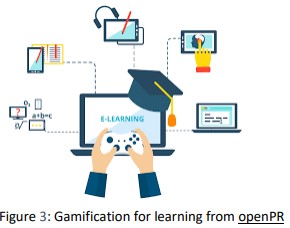Introduction to Emerging Technologies
Emerging Technologies
This module aims to enlighten you about the cybersecurity concerns in emerging technologies. You will learn about various emerging educational technologies like virtual and remote laboratories, mobile learning, smart boards, virtual reality, automation, cloud computing, the Internet of Things, and 3D printing. More so, you will learn about the benefits of these technologies as well as the cybersecurity concerns around them and their countermeasures.
Emerging Educational Technologies
Learning institutions are experiencing the power of technology more than ever before. Educational technology tools, which were once thought of as nice-to-have, are now needed to continue teaching students without disruption in the current era. Emerging technologies for teaching and learning are making a significant impact on the ways teachers prepare their content and students consume course material. Additionally, schools are being pushed to adapt to new educational technologies to stay competitive.
Initially, one of the biggest challenges in incorporating emerging technologies in the classroom is the fear of how to implement them effectively. Not every educator is tech-savvy or understands the full potential of current educational technologies to drive the success of the students. Embracing these technologies improves both the teacher’s and learner’s experience and addresses some of the limitations of face-to-face learning such as those imposed by the COVID-19 pandemic.
Specific Examples of Emerging Educational Technologies
From online learning to 3D printing, a variety of technologies are making the biggest impact on student learning today. These technologies also allow educators to account for the shortened attention spans and on-demand expectations of many of today’s students. These technologies include:
1. Video and online classes: With the undeniable growth of usage in Zoom, Microsoft Teams, and additional web conferencing tools, due to the novel coronavirus, many schools are continuing to see the benefits of offering more coursework online and remote student learning. The growth of online courses and video materials is only expected to continue and adapt to allow for more personalized student learning.
2. Mobile Learning: Students are now using tablets or mobile phones loaded with educational apps and e-textbooks to access information, receive instruction, conduct research, and submit their assignments. The mobile devices have provided opportunities for both educators and students with little to no training to create, store, and share their own.
3. Gamification: Many educators are utilizing gamification as an educational approach to motivate students. Essentially, this method allows them to learn by utilizing video game design and game elements in the learning environment. Gamification allows schools to create enjoyable and engaging experiences for students by inspiring them to approach education through games, contests, and more.
4. MOOCs: Educators across the globe are doing some amazing things with MOOCs. They have managed to strike a balance between automating the assessment process while delivering personalized, authentic learning opportunities.
5. Artificial Intelligence: Artificial Intelligence-based tools continue to showcase how they can help an array of students participate in online and offline course settings. For example, schools can embed AI-powered captions onto their videos and offer interactive transcription to students who may not be able to participate live otherwise, such as those who are deaf or hard of hearing. Additionally, these tools help to serve as learning features for all students and are proven to drive academic success with additional ways to engage with materials more effectively.
6. 3D printing and virtual reality: These emerging trends for teaching and learning are reinventing the student experience and their capacity to become proficient in their field with more visual methods that wouldn’t be feasible prior. Virtual and remote labs offer flexibility, as students can run experiments as many times as they like, both in and out of school. Because these labs are designed to allow for easy repetition of experiments, students feel less pressure to execute perfectly the first time. In the controlled environments of these labs, students are safe, even if they make an error.
While 3D printing is four to five years away from widespread adoption in schools, it is easy to pinpoint the practical applications that will take hold. Geology and anthropology students, for instance, can make and interact with models of fossils and other artifacts, and organic chemistry students can print out models of complex proteins and other molecules through rapid prototyping and production tools. Even more compelling are institutions that are using 3D technology to develop brand new tools.
Trends in educational technology and the growing usage of ed-tech tools only show the power and potential these additional materials and methods of teaching provide to today’s students. Education is about sharing knowledge and technology allows for seamless knowledge sharing and collaboration with faculty, students, and professionals around the world.
Click on the link below to explore the country by country reports of how education is evolving across the globe: https://edu.google.com/latest-news/future-of-the-classroom/emerging-technologies/






